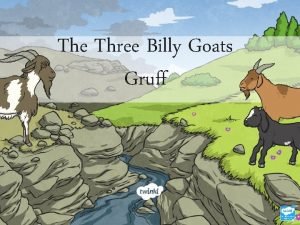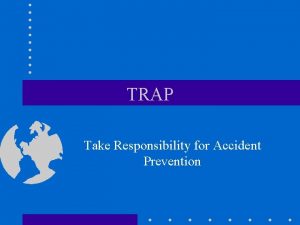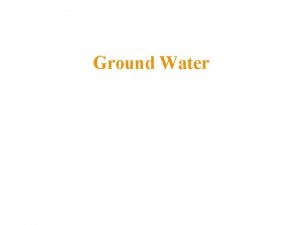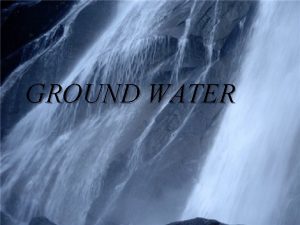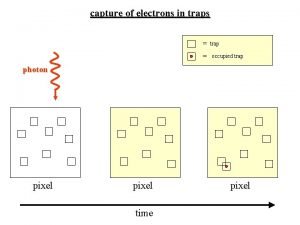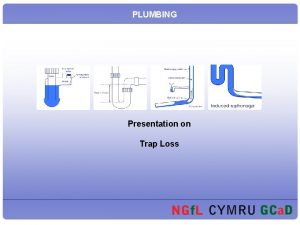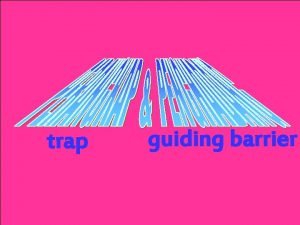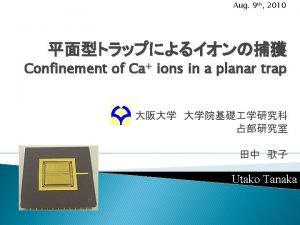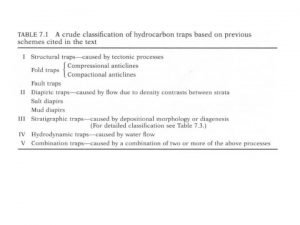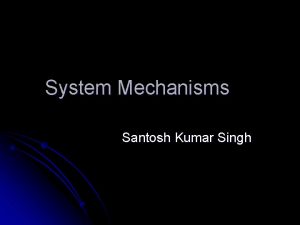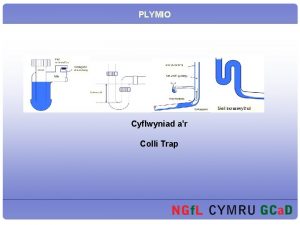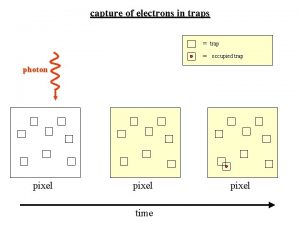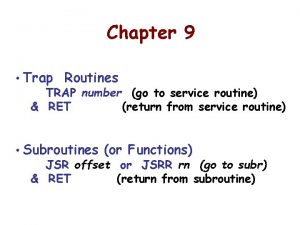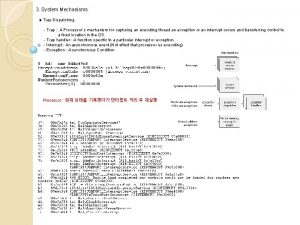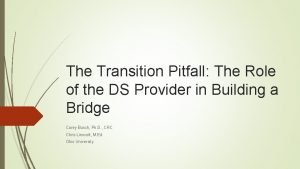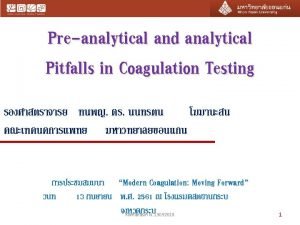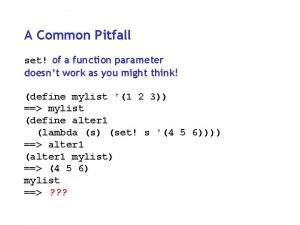1 2 The pitfall trap ground flightintercept trap





















- Slides: 21

1 2 The pitfall trap, ground flight-intercept trap, vegetation programmes plus focal taxa: 3 4 Histeridae , Nitidulidae , Pselaphinae , 1 2 Ceratocanthidae and Braconidae 4 b 5 Enrique Medianero University of Panama, PA (medianero@yahoo. com) a Alexey Tishechkin Lousiana State Arthropod Museum, Baton Rouge, USA Mirna Samaniego Smithsonian Tropical Research Institute, Panama, PA b Andres Hernandez Smithsonian Tropical Research Institute, Panama, PA Phillipe Cuénoud Muséum d’ Histoire Naturelle, Geneva, CH Sérvio c. Ribeiro Universidade Federal de Ouro Preto, BR Héctor Barrios University of Panama, PA Yves Basset Smithsonian Tropical Research Institute, Panama, PA 5 a 3 c

Pitfall traps Medianero, Tishechkin

The pitfall trap programme Estimates the activity of insects in the litter For each of 8 sites in 2003 [R 2 not surveyed]: 15 traps set Traps run for 3 days Replication in February/March, May and October 2004 for C 1 and C 2 (crane), replication of C 3 in Oct 2004 Total 225 trap surveys

Processing of material, pitfall traps and Braconidae 1) Sorted by higher categories (families), databased with focal taxa extracted 2) Braconidae: 94% of ind. processed; 88% of material identified at subfamilial level; morphotyping in progress

Abundance per site all arthropods Abundance lower at site I 1 Why? Diversity and composition of the vegetation different?

Most common taxa

Abundance of the most common families per site (no. ind. > 75)

BRACONIDAE 2453 Individual July 2006


No. of individuals per site

Ground flight-intercept traps Tishechkin Estimates the flight activity of insects in the understorey For each of 8 sites in 2003 -2004: At least one trap set in the understorey, surveyed on various occasions Traps run for 1 -2 days Replication in Oct 2003 and May 2004 Total 175 trap surveys

Ground flight-intercept traps: Report of status in the IBISCA database, not sampling effort

Processing of material, ground FIT and Histeridae-Nitidulidae. Pselaphinae-Ceratocanthidae 1) Ground FITs 80% sorted by higher categories (orders/families) with many focal taxa (primarily beetles) extracted 2) Tishechkin’s focal taxa are all sorted out, most of them processed and are on various stages of identification and databasing

Histeridae. 95% processed, sorted to morphospecies and databased. 167 species recorded in total, 43 of them – outside IBISCA collecting protocols Nitidulidae. 80% pointed and labeled, no sorting done yet Pselaphinae. 95% processed, ~70% sorted to morphospecies Ceratocanthidae. 95% processed, sorted to morphospecies and databased. 24 species recorded in total, only 1 of them – outside IBISCA collecting protocols

Botanical plots, 20 mx 20 m Standard (CTFS) census, dbh 10 mm Vegetation Samaniego, Hernandes, Medianero, Cuénoud, Ribeiro, Barrios, Basset

Examples of site variables Resolution not good enough Vegetation data Remote sensing Sticky traps

Vegetation Other variables may be derived from: • Detailed analysis of vegetation data (IBISCA DB) • S. Ribeiro’s gall and herbivory programme (vertical transects) • Remote sensing data (Landsat or better data) • Canopy openness (sticky trap data) • Occurrence of plants in the UND & UPC (DB, regressions based on DBH)

Vegetation: IBISCA Database Understorey of site B 1

Remote sensing data: Normalized Difference Vegetation Index (NDVI) NDVI is a satellite vegetation index employed to quantify the density of plant growth on the Earth: the near-infrared radiation minus visible radiation divided by near-infrared radiation plus visible radiation Guilem Chust (University of Toulouse) calculated the NDVI for all IBISCA sites, based on Landsat images [problem: resolution not good enough to distinguish crane sites C 1, C 2 & C 3] There is a correlation between total arthropod abundance of ground Malaise traps. The correlation is close to significance for similar data (though at all forest levels) with sticky traps Analyses could be easily improved and coupled with floristic and species richness analyses. Better satellite images may be useful but may come at a cost

Conclusions • Pitfall trap programme basically completed • Ground FIT programme no so advanced • Vegetation programme fully completed • Braconidae have been studied to some extent; the main bottleneck is lack of time • Tishechkin’s beetle groups should be completed in the near future • Work is needed to extract useful vegetation-related data from the database and other programmes

Acknowledgements: our sponsors and the IBISCA team Part of IBISCA participants during the field replication of May 2004
 Contoh highly open question
Contoh highly open question The pitfall of hard times
The pitfall of hard times Pitfall dan word
Pitfall dan word Once upon a time there were three billy goats gruff
Once upon a time there were three billy goats gruff Trời xanh đây là của chúng ta thể thơ
Trời xanh đây là của chúng ta thể thơ Hệ hô hấp
Hệ hô hấp Số nguyên là gì
Số nguyên là gì Môn thể thao bắt đầu bằng chữ đua
Môn thể thao bắt đầu bằng chữ đua đặc điểm cơ thể của người tối cổ
đặc điểm cơ thể của người tối cổ Hát kết hợp bộ gõ cơ thể
Hát kết hợp bộ gõ cơ thể Các châu lục và đại dương trên thế giới
Các châu lục và đại dương trên thế giới ưu thế lai là gì
ưu thế lai là gì Tư thế ngồi viết
Tư thế ngồi viết Gấu đi như thế nào
Gấu đi như thế nào Cái miệng nó xinh thế
Cái miệng nó xinh thế Mật thư tọa độ 5x5
Mật thư tọa độ 5x5 Từ ngữ thể hiện lòng nhân hậu
Từ ngữ thể hiện lòng nhân hậu Tư thế ngồi viết
Tư thế ngồi viết Thế nào là hệ số cao nhất
Thế nào là hệ số cao nhất Thứ tự các dấu thăng giáng ở hóa biểu
Thứ tự các dấu thăng giáng ở hóa biểu Thẻ vin
Thẻ vin Lp html
Lp html



